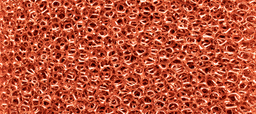Computational Identification and Experimental Demonstration of High-Performance Methane Sorbents
TECHNOLOGY NUMBER: 2022-174

OVERVIEW
Computational screening tool optimized to identify promising MOFs for storage and delivery of methane- Best-in-class materials with superior deliverable capacities at low pressure and ambient temperature
- Improved safety and range for natural gas-powered vehicles
BACKGROUND
Natural gas is an attractive gasoline alternative on account of its wide availability, established distribution network, high hydrogen to carbon ratio, and moderate carbon emissions. A long-standing challenge for its use as a transportation fuel is the fact that it is a gas under normal temperatures and pressures, which makes safe transportation and onboard vehicle storage difficult. Current solutions to natural gas storage involve liquefaction at low temperatures and compression at high pressures, both of which require complex and expensive tank designs.
Adsorbed natural gas (ANG) is a promising alternative because of its ability to store natural gas at high densities at modest pressures (~35-80 bar, rather than 250 bar), which translates to less costly tank designs and greater safety. Metal-organic frameworks (MOFs) with high porosity, high surface area, and tunability in structure have emerged as promising materials for ANG. HKUST-1 is one such MOF that is commonly cited as a benchmark methane adsorbent, given its high total methane capacity and excellent deliverable capacity.
INNOVATION
Researchers at the University of Michigan have developed a novel computational screening tool that is specifically optimized to identify promising MOFs for storage and delivery of methane (the primary component of natural gas). Although high uptake at elevated pressure is critical for achieving this performance, a low density of high-affinity sites also contributes to a more complete release of stored gas at low pressure.
Utilizing this method, the researchers screened many thousands of known MOFs and identified the best performers. Of those identified, the researchers synthesized and experimentally verified the exceptional performance of two MOFs, which both outperform the benchmark sorbent, HKUST-1 (both volumetrically and gravimetrically), under a pressure swing of 80 to 5 bar at 298 K. Specifically, the new compounds exhibit deliverable volumetric capacities of 226 cm3/cm3 and 216 cm3/cm3 (in contrast to 200 cm3/cm3 for HKUST-1) and gravimetric capacities of 0.271 g/g and 0.377 g/g (in contrast to 0.162 g/g for HKUST-1). The observed experimental properties correlate well with the computationally predicted properties, which provides confidence that the majority of the identified MOFs are likely to be exceptional performers in ANG applications.